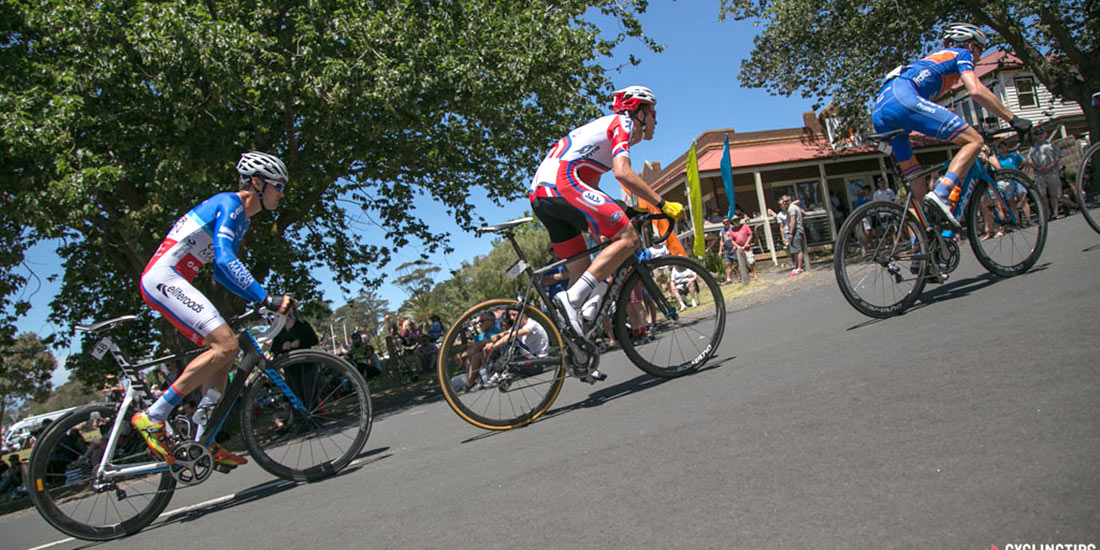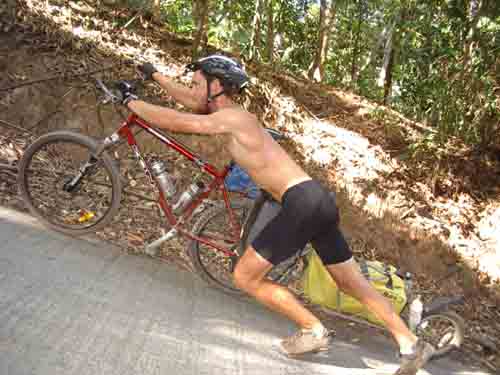
Recently I completed my first road race, the Armstrong Century Ride, held early in the season, May 28th.
I was riding up Knob hill, which averages 4% with some steep 9-11% sections and is 3km long with 112 metres vertical. This hill destroyed many of the riders and was the area they were most fearful of.
I found it fairly easy as I had a secret weapon, I literally had an extra gear. I run an 11-32 rear cassette, while most bikes have 11-25, 11-26 or 11-28 cassettes. I changed my cassette last year.
This extra gear allows me to get up a hill with less effort than before and to keep a higher cadence for climbs. I then have more energy to go fast on the flat sections.
Another benefit of the extra gear is that you can keep your heart rate fairly steady and avoid spiking into the max heart rate zone too often. Here is more detail on heart rate training.
Do I need an extra gear ?
 Consider this if you are older, heavier or less fit than most cyclists. You can also start the season with an 11-32. When you have built up your leg muscles and are powering up most hills, swap a lower range cassette, such as an 11-28, back in.
Consider this if you are older, heavier or less fit than most cyclists. You can also start the season with an 11-32. When you have built up your leg muscles and are powering up most hills, swap a lower range cassette, such as an 11-28, back in.
You don’t need to do this if you are a frequent cyclist, young, with strong legs, fitter than average, or if you live in a flat place with no hills.
I live in hilly Kelowna, Okanagan, BC. We have many category 4 climbs and hills with 10-12% sections, so I take the easy way out. I feel that an 11-30 cassette will actually suit me better. The gear steps are smoother, and I intend to replace my 11-32 with the 11-30 soon.
 Top cyclists will point out the negative to the extra gear, you will be slower than a rider with an 11-28, or 11-26 who has the power and strength to drive the lower gear up the hill.
Top cyclists will point out the negative to the extra gear, you will be slower than a rider with an 11-28, or 11-26 who has the power and strength to drive the lower gear up the hill.
Stronger cyclists may well be standing up for most of the hill. If you have that ability, then great, you don’t need this advice. More on when to sit or stand up for hill climbs.
However, if you’re not quite as strong and you try standing up for a long time, odds are that you will blow up on the hill, spike your heart rate to the maximum and have nothing left after the top.
I find that the extra gear gives me an option that I can use if I need to. If I am feeling strong or the gradient is not too steep, I can ignore it.
My experience is that giving up 2 -3 mins on a climb to arrive with energy to spare for the rest of the event may give you a faster overall time when you cross the finish line.
Select Your Chainset
The chain-rings on the front of my bike are a compact 50-40. This is designed for average areas with a mix of hills and flat roads.
Many pros and experienced riders use a standard 53-39 chainset. They have the power to drive the bigger gears and can achieve higher overall speeds.
Your choice of front chain rings has an impact on your rear cassette gear ratios. A rear casette of 11-28 combined with a standard 53-39 chainring is similar to an 11-25 with a compact 50-34 chainset.
How to do this
You can purchase a replacement cassette for your bike very easily. but buy an inexpensive model first as you experiment. You can purchase a more expensive higher grade cassette later. This will be lighter and may perform better.
In my opinion, this change can be the most effective upgrade for your bike and have a huge effect on your riding and overall average speed.
Your local bike shop can change your cassette for you. If you have a home workshop it is not too difficult to change a cassette yourself. You will need a few tools like a chain whip to do this.
Even the Pros at the Tour de France are using larger cassettes
There is a belief amongst many cyclists that the best cyclists don’t need or use easier gears for the mountains. There is a lot of truth to this, better riders and pro cyclists do generate more power. They can drive bigger gears than normal riders.
Pros can use smaller cassettes for riding up hills but they also face bigger challenges. The mountains that they climb are huge and often very steep.
Many pro riders at the Tour de France use an 11-28 cassette, some are even using an 11-30 cassette. The reason is to help to control their effort and their cadence so they don’t blow up on a steep climb.
Geeky Section – Explanation of gear ratios
There are many guides to gear ratios that can go into deep mathematical detail, which can become very complex. Here is one link that explains the basics very well – Gear Ratios explained
What is your opinion?
- Have you changed your cassette to make hill climbs easier ?
- Do you swap mid season after gaining power through training ?
- What gears do you ride with ?
- Do you ride a Compact or Standard Crankset ?
- Do your friends comment on your choice – negatively or positively ?
Please leave comments in your review.
Many thanks,
Gareth